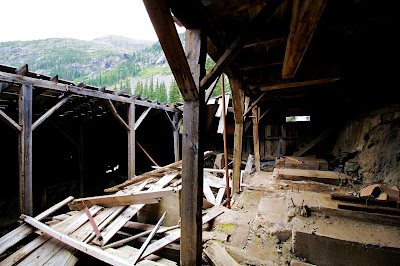High up in the Rocky Mountains of Colorado lie the remains of hundreds of ghost towns and mining sites. Though many of these locations have faded away and been lost to time, there are a few that still stand. And the Magnolia Mill is far and away one of the more incredible locations.
The current Magnolia Mill was built in 1930 to replace the original mill built in the 1860's used to process ore from the original gold rushes. The Magnolia was one of six different mills built to handle the ore from multiple mines around the area.
The gold rush prompted the creation of the town of Montgomery in 1861, built to house the miners and mill workers. At it's height, the town housed over 1,000 residents, 150 cabins, hotels, five sawmills and the largest dance hall in the region. The townspeople named the 14,000 foot mountain nearby Mt. Lincoln, in honor of the current President. They even sent him a bar of gold from the Montgomery Mine. As the gold rush died down in the late 1860's, the townspeople moved away to nearby towns. In 1890, Colorado Springs bought the land and flooded the area to create the Montgomery Reservoir to supply the city with water. Most of the town of Montgomery now resides below the blue waters of Montgomery Reservoir.
The Magnolia is one of the few reminders of the once busy and productive mining operations in the area. Surprisingly, the mill is in a very well preserved state. The roof has collapsed in spots and most of the interior equipment has been hauled off. The long covered ore "walkway" likely had a long continous rubberized canvas conveyor belt in it, though now long gone, bringing crushed rock up into the storage area in the main section of the mill. The ore would then be ground up into a fairly fine sand with a series of ball mills.
Such an amazing piece of Colorado history. This was my second time visiting this locations and this will always be one of my favorite places in the state.
Not my photo but a look at the Magnolia from back in 1960. Courtesy of the Denver Public Library.































